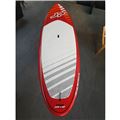The Ultimate Guide to Sydney Weather Forecasting
The Ultimate Guide to Sydney Weather Forecasting
In this ultimate guide, we will delve into the various aspects of Sydney's weather forecasting, from the climate and seasonal patterns to the tools and techniques used for prediction. By the end of this article, you'll be equipped to interpret weather forecasts and understand the impact weather can have on Sydney's lifestyle.
Understanding Sydney's Climate
Before delving into the specifics, it's crucial to grasp the broader climate of Sydney. Located in the southern hemisphere, Sydney experiences an oceanic climate characterized by moderate temperatures throughout the year. Summers are warm, with an average high of 26C (79F), while winters are mild, with averages ranging between 8C (46F) and 17C (63F).
Sydney's climate is influenced by several factors, including its coastal location and the surrounding ocean currents. The city benefits from the cooling effect of the ocean, which helps to moderate temperatures and create a pleasant environment.
Furthermore, Sydney's climate is also shaped by the prevailing winds. The city experiences a predominantly westerly wind flow during summer, which brings warm and dry air from the interior regions of Australia. In contrast, winter sees a shift in wind patterns, with the arrival of southerly winds that originate from the Southern Ocean. These winds can bring cooler temperatures and occasional rainfall to the city.
Seasonal Weather Patterns in Sydney
Sydney's seasonal weather patterns follow the southern hemisphere's calendar, with summer occurring from December to February and winter from June to August. During summer, residents and visitors flock to the city's stunning beaches, enjoying the sun, surf, and balmy temperatures. However, it's essential to be aware that summer can bring occasional heatwaves, with temperatures surpassing 40C (104F).
Summer in Sydney is a vibrant and energetic time, with numerous outdoor festivals, concerts, and sporting events taking place. The city comes alive with people enjoying picnics in the parks, barbecues on the beach, and vibrant nightlife.
On the other hand, winter in Sydney offers a milder climate, making it an enjoyable time to explore the city's cultural attractions. While rainfall is relatively consistent throughout the year, winter sees a slight increase in precipitation, so carrying an umbrella is always a wise choice.
During winter, Sydneysiders embrace the cooler temperatures by indulging in cozy activities. Cafes and restaurants offer warming dishes, and the city's theaters and galleries showcase a range of cultural events. It's also a great time to take a leisurely stroll through the Royal Botanic Garden, admiring the seasonal blooms and enjoying the peaceful ambiance.
Unique Weather Phenomena in Sydney
Sydney is not just about sunny skies. The city can also experience unique weather phenomena that make it even more intriguing. One such phenomenon is the "Southerly Buster," a sudden and powerful cold front that brings a rapid drop in temperatures and strong winds. These busters are notorious for interrupting summer heatwaves, providing relief to the population.
When a Southerly Buster hits Sydney, it can transform the city's atmosphere within minutes. The temperature can plummet, and the once calm ocean can turn into a frenzy of crashing waves. It's a sight to behold and a reminder of the dynamic nature of Sydney's climate.
Another notable weather event is the "East Coast Low." These low-pressure systems can form along the east coast of Australia during autumn and winter, bringing heavy rainfall, gale-force winds, and potential coastal erosion. It's crucial to stay informed about these weather systems to ensure safety and make the most of your time in Sydney.
Despite the occasional weather challenges, Sydney's climate overall is relatively mild and enjoyable. It offers a perfect balance of warm summers and mild winters, making it an ideal destination for outdoor activities and exploration throughout the year.
Tools and Techniques for Weather Forecasting
Weather forecasting has come a long way from simply observing the sky and feeling the wind. Today, meteorologists employ a range of tools and techniques to provide accurate predictions.
But how did we get here? Let's take a closer look at the traditional methods of weather prediction and the modern technology that has revolutionized the field.
Traditional Methods of Weather Prediction
Before the advent of modern technology, people relied on traditional methods to predict the weather. These methods involved observing nature's indicators, such as the behavior of animals, cloud formations, and changes in air pressure.
For example, farmers would often look to the behavior of animals like birds, insects, and even domesticated animals like cows and horses. They believed that changes in animal behavior could indicate an approaching storm or a shift in weather patterns.
Cloud formations also played a crucial role in traditional weather prediction. Different types of clouds, such as cumulus, stratus, and cirrus, were believed to be associated with specific weather conditions. By closely observing the shape, color, and movement of clouds, people could make predictions about the upcoming weather.
Changes in air pressure were another important indicator. A sudden drop in air pressure was often associated with an approaching storm, while a rise in pressure signaled fair weather.
While these traditional methods may not be as precise as modern technology, they can still provide valuable insights for short-term weather forecasting. Many farmers and outdoor enthusiasts continue to rely on these age-old techniques to plan their activities.
Modern Technology in Weather Forecasting
With the advancements in technology, weather forecasting has become more accurate and reliable than ever before. Modern weather forecasting relies heavily on advanced tools and techniques, including satellites, radar systems, and computer models.
Satellites have revolutionized the way meteorologists observe and monitor the Earth's atmosphere. These orbiting devices provide a bird's-eye view of the planet, enabling meteorologists to monitor cloud formations, precipitation patterns, and track tropical cyclones. Satellites also play a crucial role in monitoring the Earth's climate and studying long-term weather patterns.
Radar systems, on the other hand, provide real-time information on storms and localized weather conditions. By emitting radio waves and analyzing their reflections, meteorologists can detect the presence of precipitation, measure its intensity, and track the movement of storms. This information is invaluable for predicting severe weather events and issuing timely warnings to the public.
Computer models have also revolutionized weather forecasting. These models use complex mathematical algorithms to simulate the atmosphere's behavior and provide forecasts based on current conditions. By inputting data from various sources, including satellites, radar systems, weather stations, and buoys, meteorologists can create detailed models that predict weather patterns days or even weeks in advance. These models are continuously refined to improve accuracy, enabling meteorologists to make predictions with greater confidence.
In addition to these tools and techniques, meteorologists also rely on ground-based weather stations, weather balloons, and weather buoys to collect data on temperature, humidity, wind speed, and other atmospheric variables. This data is then fed into computer models to generate accurate forecasts.
Overall, the combination of traditional methods and modern technology has transformed weather forecasting into a highly sophisticated and accurate science. As technology continues to advance, we can expect even more precise and detailed weather predictions in the future.
Interpreting Weather Forecasts
Once you have access to a weather forecast, deciphering the information can sometimes feel like unraveling a cryptic code. However, with a basic understanding of weather symbols and terminology, you can navigate these forecasts with ease.
Decoding Weather Symbols and Terminology
Weather forecasts often use symbols to represent different weather conditions. For example, a sun symbol represents clear skies, while clouds or raindrops indicate precipitation. Familiarizing yourself with these symbols will help you understand the forecast at a glance.
Weather forecasts also use terminology such as "chance of rain," "partly cloudy," or "strong winds." Understanding these terms and their probabilities will allow you to plan your activities accordingly. Keep in mind that probabilities are based on statistical models and may vary in accuracy.
Understanding Probability in Weather Forecasts
Probability is a key component of weather forecasting. For example, a forecast might state a 70% chance of rain. This doesn't mean that it will rain in 70% of the area covered by the forecast. Rather, it indicates that in similar weather conditions, rain occurred in 70% of the cases.
Interpreting probabilities allows you to make informed decisions. It's essential to consider the likelihood of specific weather events and plan accordingly. Carrying an umbrella or scheduling indoor activities during periods of higher probabilities can help you navigate Sydney's weather with ease.
Impact of Weather on Sydney's Lifestyle
Sydney's vibrant lifestyle is closely intertwined with its weather. Understanding how weather can influence various aspects of daily life will help you adapt and make the most of your time in the city.
Weather Influence on Outdoor Activities
With its stunning landscapes and temperate climate, Sydney offers numerous outdoor activities. From surfing and beach volleyball to exploring national parks and harbor cruises, there is something for everyone. However, weather conditions can greatly impact these activities.
Planning a beach day? Check the surf and weather forecast to ensure optimal conditions. Planning a hike? Consider the temperature and potential rainfall. Being aware of the weather's influence on outdoor activities will help you plan and enjoy your time in Sydney to the fullest.
Weather and Sydney's Tourism Industry
Sydney's thriving tourism industry is dependent on favorable weather conditions. Sunny days attract visitors to iconic landmarks like the Sydney Opera House and Bondi Beach. However, inclement weather can significantly impact tourism.
Understanding weather forecasts and knowing how to interpret them allows both tourists and businesses to adjust their plans accordingly. Whether rescheduling outdoor events or exploring indoor attractions, flexibility and awareness of weather forecasts are essential for maintaining Sydney's thriving tourism industry.
Preparing for Extreme Weather Conditions
While Sydney's climate is generally mild, it's essential to be prepared for extreme weather conditions that can occasionally occur.
Safety Measures for Severe Weather
Severe weather events, such as heatwaves, heavy storms, or bushfires, require specific safety measures. Staying informed through official warnings and following guidelines from local authorities is crucial in these situations.
Preparing an emergency kit with essential supplies, such as food, water, medication, and a battery-powered radio, can help you weather any storm. It's also important to have a plan in place, ensuring you know how to reach safety and communicate with loved ones if necessary.
Building Resilience Against Climate Change
As the effects of climate change become more apparent, building resilience to extreme weather events is crucial. In recent years, Sydney has experienced more frequent and severe heatwaves, storms, and floods.
Adopting sustainable practices, investing in infrastructure, and supporting initiatives aimed at mitigating climate change are essential steps in building a resilient Sydney. Additionally, staying informed about climate change impacts and advocating for sustainable policies can contribute to a more sustainable and weather-resilient future.
Conclusion
As you can see, understanding Sydney's weather patterns and forecasts is essential to making the most of your time in this vibrant city. By acquainting yourself with Sydney's climate, weather phenomena, and the tools and techniques used for weather forecasting, you can ensure a smooth and enjoyable experience, regardless of the weather conditions. Whether you're planning outdoor activities or exploring Sydney's cultural attractions, being weather-savvy will help you make informed decisions and adapt accordingly. Remember, Sydney's weather is part of its charm, so embrace whatever Mother Nature has in store for you during your visit!











